They were told they’d die young. Then a ‘miracle drug’ changed everything — and they have to grapple with what that means
A new medication was supposed to change everything for people with the genetic disorder cystic fibrosis. But it also changed people’s lives in ways they didn’t expect, Holly Baxter reports

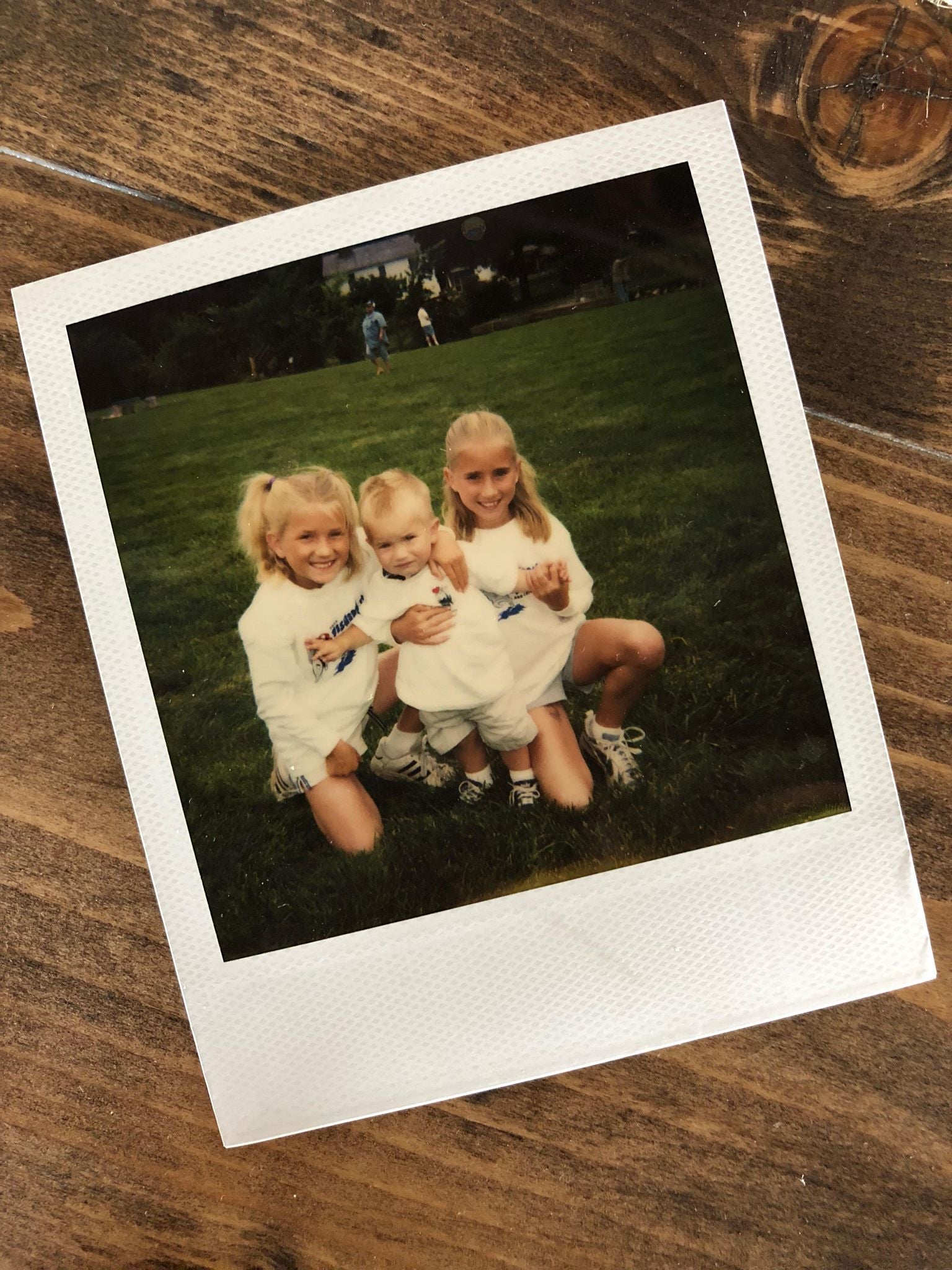
When Faith Miller started on the ‘miracle drug’, it wasn’t what she expected. Everyone else had talked about The Purge — the days following your first set of pills when you cough up everything in your lungs; when the years of hardened, accumulated mucus all start pouring out in a biblical expulsion, and the day you then wake up suddenly able to breathe — but that’s not how it was for her. She thought it might not be working in the same way. She feared it might be another disappointment.
It was mid-December in Virginia, freezing cold and windy, and the walk from the parking lot to her office wasn’t exactly long, but it was uphill and it had some stairs. Faith was only 24 years old, but her lungs had already deteriorated to the point where an uphill walk in cold weather was hard for her. She’d usually have to pause a couple times to catch her breath. “And then, on the fourth or fifth day I was taking it,” she says, “I was walking into work and I was like: You know, this walk doesn’t feel as hard or as difficult or as painful as it usually does. And I realized: I haven’t been coughing as much lately.”
It seemed like the miracle had been delivered. “But then I think it was exactly a week later, I was just going about my work day, and my arm started itching.”
Faith has cystic fibrosis, a life-limiting genetic condition that requires daily management. CF causes thick, sticky mucus to build up in the lungs and digestive system, leading to breathing problems, organ damage, and difficulty absorbing nutrients. People born with CF are usually chronically underweight and out of breath. They need to be pummeled on the chest and back for at least an hour and a half per day to help them break up some of the mucus so they can cough it up. That hard, sticky mucus gums up the channels in their pancreas, stopping the release of normal digestive enzymes and doing irreversible damage by the time they’re just a year old. It builds up in the sinuses, causing chronic head pain, congestion and the growth of airway-blocking nasal polyps. It affects the reproductive tract, making almost all men with CF infertile and diminishing the fertility of female patients. It also provides the ideal breeding ground for bacteria, meaning that serious infections and pneumonia are common. CF patients cycle through antibiotics — by mouth, by nebulizer, in the hospital hooked up to an IV — from early childhood, in an effort to stave off the worst of the infections. Lung capacity declines year by year. Once it consistently hits below 40 percent, most doctors will introduce the idea of the CF Hail Mary: a double lung transplant.
Because new lungs mean a lifetime of immunosuppressant drugs, the patient will be even more at risk of infection than before after the operation. Transplanted lungs tend to last about five to 10 years, and they’re not always good years. In her early 20s, Faith was in good health, and when her doctor talked about the possibility of a lung transplant in her future: “I said: I don’t even want one, because I didn’t think I was going to need one until my forties,” she says. “And by that point, I was like: Eh, I’ve lived a good life.” In CF terms, that would’ve been true. When Faith was born, her parents were told to expect that she would live to 30.

Then, at the very end of 2019, Trikafta came out. Hailed as a medical breakthrough, Trikafta targeted the root cause of CF, rather than simply working on the symptoms. Developed by the relatively small and under-the-radar pharmaceutical company Vertex, it sought to teach the body to refold a faulty protein into the right shape so that chloride can flow through the right channels and mucus can be watered down. When that misfolded protein — which folds into the wrong shape because of the bad “messaging” given to it by the CF gene — starts to look more like a healthy protein, symptoms dramatically stop. Chloride draws water to the surface of the lungs. Sinuses clear out, digestion calms, breathing gets easier. It works for about 90 percent of people with CF — and it happens almost immediately.
The scientists who developed Trikafta thought they’d found a “pause” button for CF. They were elated to imagine that people who started taking it in childhood might never end up underweight and scarred, their lung capacity shot by decades of damage. They were glad that the people who were already suffering might escape further decline. But then they started seeing something unexpected in the later trials: people weren’t just maintaining their baseline. They were improving. Against all odds, their damaged lungs were gaining capacity.
People were throwing away the heavy, vibrating vests they had had to wear for hours a day to break up the mucus. They were taking the stairs two at a time. They were getting pregnant. They were running marathons. On forums and social media, CF’ers shared with other CF’ers about their progress. Many were tentatively optimistic, then euphoric.
It wasn’t like that for everyone.
Faith’s itchy arm got itchier. “I would wake up in the middle of the night just itching everywhere,” she says. A month after she’d started Trikafta, she took a picture of her foot and noticed “it looked like I’d stuck it in a swarm of mosquitoes.” Over the next two months, she went back and forth from her doctor’s office. She had a skin biopsy from a dermatologist. She saw an allergist. She tried a host of antihistamine creams and pills. Then, one night, she woke up and her whole body was burning. From head to toe, her skin “was more red than it was white.” She was spiking a fever and her extremities were itching unbearably. She struggled to fall back to sleep for an hour, bracing against the pain, and then went to one final medical appointment in the morning. There, it was decided that her reaction was too severe for her to safely continue with Trikafta.
Hearing that, she said, “was really tough.” A few weeks before, she’d celebrated Christmas with her family, and everyone had been elated about her reaction to the much-touted miracle drug. Her parents — who had no idea they were carrying the CF gene until Faith was born with the condition — had been especially happy. They had lived with so much guilt. Faith immediately thought of them when she got the bad news.
Her doctor stepped out of the room and, Faith says, “I just lost it.” She was supposed to drive to her parents’ house straight away, but instead she texted her mom saying: “I’m gonna go get dinner somewhere, kind of decompress a little bit. And then she called me and — you know how moms are — she immediately knew something was wrong… She was like: ‘Are you OK? Your voice sounds weird.’ And I was like, ‘Yes?’ and just burst into tears.”
What followed was “a tough weekend for honestly everybody,” Faith remembers. “I think it would've been less disappointing if I hadn't felt such a difference. I mean, even at that appointment, my [lung capacity] numbers had jumped I think about 10 percent in just two weeks, which is huge.” She pauses and smiles sadly. “And of course now I’m in stark decline.”
The Barrett family: When lightning strikes more than twice
Across the country from Faith Miller, in rural Kansas, Morgan Barrett is forgetting. She’s forgetting “what it was like to be tethered to treatments every day,” forgetting the itchy vest that set off alarms at the airport, “losing the muscle memory of mindlessly making nebs, cleaning them, checking them for dishwasher debris.” She’s forgetting the thrush in her mouth from the constant antibiotics, forgetting the painful stomach cramps, forgetting the constant health anxiety, and the mental preparation for an organ transplant.
Morgan also started on Trikafta in December 2019, just after it got FDA approval. It was a scary time for people with CF, especially where Morgan lived. News of a deadly respiratory virus had started to proliferate — Covid outbreaks were just beginning — and half the population didn’t even seem to believe that the virus was real. Many people in her community refused to wear a mask, including some of her family members. As someone with severely compromised lungs, she feared for her life more than most.
Morgan isn’t the only person in her family with CF. Her sister Allison, just two years younger than her, was also born with the condition. They were diagnosed together after a family doctor noticed that Allison had nasal polyps, a hallmark of the disease. By that time, they were 5 and 7 years old.
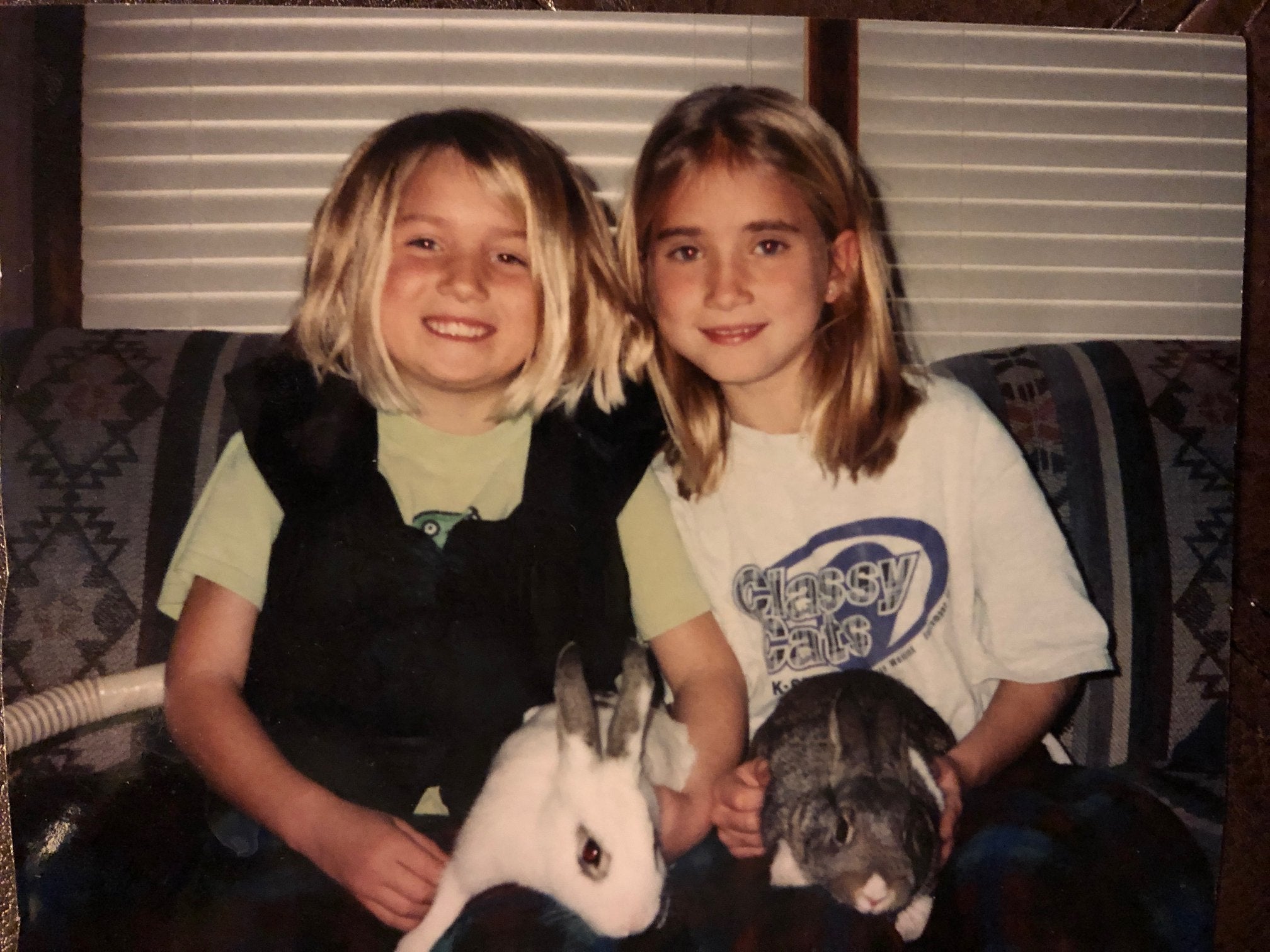
“My sister and I were always sick growing up,” says Morgan. “Very underweight and just like, anything that was going around, we got it. I remember coughing constantly, not sleeping, being starving constantly because I obviously wasn’t taking enzymes yet so my food wasn’t being digested properly. At school, I’d just be watching the clock until lunchtime.”
Because levels of chloride are disrupted in people with CF, they have particularly salty sweat — and so one way to diagnose the condition is to collect their sweat and send it to a lab. These days, sweat tests are done quickly using a chemical and an electric current that stimulates sweat glands, but this was 1999. “Back then, they literally put a plastic bag over your arm and you just hung out with this plastic bag on your arm for a couple of hours and then they would collect the sweat they gathered,” she says. “...So I remember being at the hospital and just, like hanging out in the cafeteria with my mom and my sister with a bag on my arm and just being really uncomfortable, and sort of understanding but not really understanding what it meant.”
In 2001, their mother got pregnant for the third time. Morgan and Allison both remember when doctors delivered the news that the new baby — a boy — also had CF: a nurse traveled all the way to their house to console their mother in person, says Morgan. Allison remembers being confused as she watched her mother “just sobbing and sobbing and sobbing.”
For a child to have CF, both parents must carry the faulty gene — and even then, there’s only a 25 percent chance that they’ll have a child who’s affected. The odds were particularly cruel for Morgan and Allison’s family. But then they swung the other way when Trikafta came out.
When Morgan took the first pill, she didn’t know what to expect. Then The Purge hit her, hard. “It was either the same day or the next day, I literally just coughed up everything that was in my lungs,” she says. “...All the mucus that had been taking up residence in my lungs, it all just got out. And then it’s like: you can breathe! And it’s just crazy.”
All her life, she had been diligently following the doctors’ orders, complying with her medication, going through the daily routines. “The message that I remember always getting from my doctors and my respiratory therapist is: Do your treatment, take your medication, and something will come along,” she says. “You know, there's work being done. There's research being done. There's going to be something that becomes available, and you just need to have good lung function when you get to that point, because whatever you have, whatever lung function you're left with when that — whatever that treatment may be — comes out, that's the lung function that you're going to have for the rest of your life.”
Morgan believed them: a miracle was surely right around the corner. She worked hard to prepare for that miracle — not just to prepare herself, but to prepare her brother and sister.
“My sister was the total opposite. She was, from a very young age, very defiant,” she says. “Very much just like: No, I’m not doing that… She was just kind of resigned to her fate and just, like: I'm gonna die, so it doesn't matter. And I was like: No, you're not, and I'm going to step in and make sure you're not.”
Morgan felt personally responsible for maintaining her siblings’ health; for setting the right example, and for convincing them to keep up their treatment regimens and therefore their morale. She even called up Allison’s doctors a couple of times when she wasn’t complying, “which was a total HIPAA violation, because I don’t think I had permission to talk to them, but her doctors were the same doctors that I had. So I’d reach out to them and be like: Hey, I know Allison hasn’t reached out to you guys, but she’s really sick.”

As she entered young adulthood, Allison had taken a turn for the worse. It seemed to Morgan that her little sister’s health was unraveling dangerously quickly — “she was essentially dying.” And it’s fair to say that Morgan’s fears, in terms of what can happen to a person with CF as they approach their 20s, were legitimate. In 2019, just before Trikafta came out, something happened that shook her long-held optimism. “I remember this girl I knew who was 28 at the time, who I thought was fairly healthy — she got hospitalized, which is common,” she says. “And then she just died. I still don’t really know what happened. But I remember being really shaken by that and being like: Wow, OK, if she can die, and she was someone who I thought of as a healthy person, well, what does that mean for me?”
At that point, other people Morgan knew socially had started to undergo lung transplants. Some of them died on the operating table; others died from complications or from organ rejection. Her brother Mason spent his 15th birthday having a liver transplant, which failed, and then another one 48 hours later. Liver transplants tend to take better than lung transplants — three quarters of liver transplant recipients are still alive after five years, as compared to just over half of lung transplant recipients. Even in the best case scenario, Morgan knew that those people opting for new lungs were nearing the end of the road.
There was another thing bothering Morgan, as well. Trikafta had worked so well for her that she was hit with a sledgehammer of survivors’ guilt. She thought a lot about the 10 percent of people for whom Trikafta would not work, or people in other countries who weren’t able to access it as easily as her. She also wondered what it meant for her place in the CF community, where she had found support and camaraderie.
“I have old journals from when I was little — because I've always journaled — and I wrote when I was like seven or eight years old: ‘I'm special because I have cystic fibrosis,’” she says. “So I leaned into that identity.” Her ties to her family were based on being the responsible one, the one who found out about what to do, the one who took charge of medical situations and kept other people alive, the strong one. Now — so long as Trikafta worked for Allison and Mason, too — she wouldn’t have to be strong for anyone anymore. Her mother wouldn’t have to be a “medical parent” anymore, a woman preparing to bury her three young children in middle age. Her sister wouldn’t be the flighty one in denial anymore, because there would be nothing left to deny. What would their family look like if all their familiar roles were taken away by a miracle?
“It’s mourning the loss of the community that you have, the life that you had,” she says. “I think I just had very much settled into: this is my life, this is what it's like… I mean, I still do have CF, but you no longer feel like you do [on Trikafta]. It's like: OK, then why do I matter now? Because I think I put so much of my identity into that, that then when it was gone, I was like, oh, why do I matter now?”
Feeling a sudden loss of purpose after regaining so much of her health was not on Morgan’s miracle medication bingo card. “It was kind of a surprise,” she says, “and I think I felt really bad about it too.” She was writing blogs for the CF Foundation at that point, but she didn’t know how to approach that particular issue. “I felt ungrateful, and I was worried about writing about it at first. Because I was worried that people would be like: What's your problem?” She thought about all the people she knew who had already undergone lung transplants, whose life expectancies had been cut short by that process. Although those people told her that they were happy for her, “It's uncomfortable. You kind of think: Why did I get so lucky?” In her head, she’d play out reactions she feared people would have if she came clean about her complicated feelings — about how being healthy might affect her relationships, and how she would have to suddenly reorganize all her plans around a much longer lifespan. She worried that people would think: “How dare you? How dare you not just take it and be purely grateful? How dare you feel conflicted?”
Meanwhile, Allison was in a bad way, and things were scary. Her insurance didn’t know whether they would sign off on Trikafta. Morgan was faced with the possibility that she may end up functionally symptom-free from CF, with a recovering lung capacity and a radically improved life, perhaps even a life that lasted as long as anyone else who didn’t have cystic fibrosis — but it might not work the same for her siblings.
‘I’m not even going to be here long enough for you to know who I am’
Allison remembers when she first found out she could die young. It wasn’t long after she and Morgan had been diagnosed, and their parents kept an information sheet stuck to the refrigerator with a list of bullet points. They were young parents — their mother had just turned 20 when she had Morgan — and they were trying to keep up with everything as best they could. One day, Allison walked past the fridge and cast her eye over the bullet points, “and one of the bullets on there was that life expectancy was around 30.”
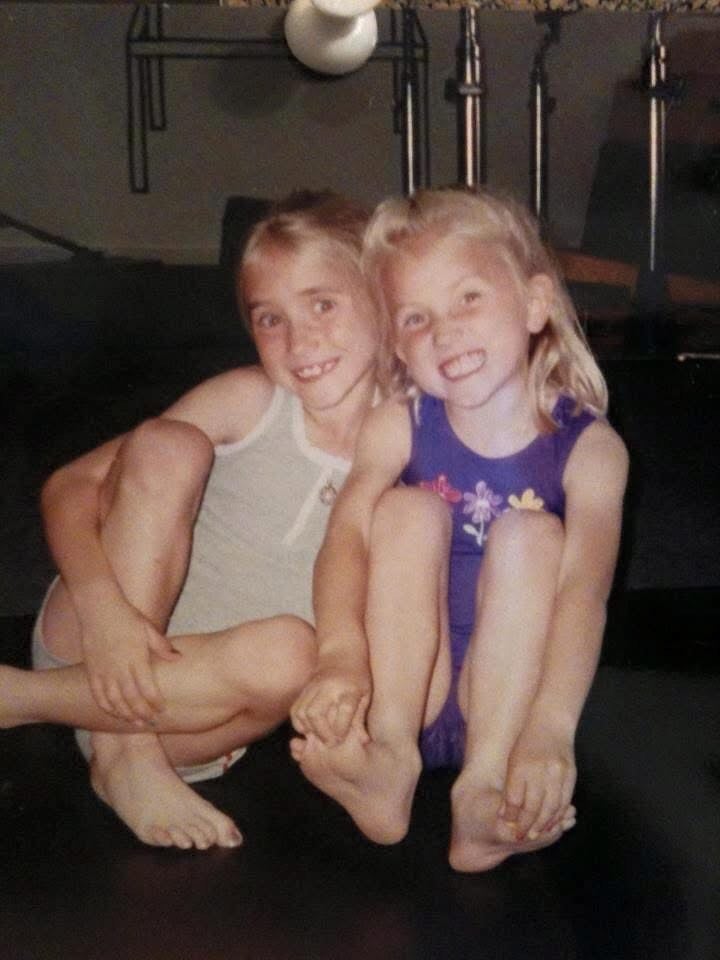
“I remember I was like: Wait a minute — you know, just caught off guard,” she says. “...I do remember kind of discovering that on my own and not knowing what to do with it. Like: OK, this is kind of a big deal, but what do I do with this information?” Between 1999 and 2020, the median age of death for a person with CF went up from 24 to 37 years old. It was clear to Allison that she and her siblings didn’t have a lot of time.
But unlike Morgan, Allison didn’t want to lean into CF as part of her identity. Instead, she actively fought against it. She didn’t want to tell her friends at school, and she didn’t want to discuss it at home, either. She didn’t want to join support groups or make friends who also had the condition; she wanted to party and to forget, and she embraced a “live like you’re dying” mentality. She bristled when Morgan tried to look after her: “It irritated me because I didn’t want to make a big deal out of stuff. I didn’t want to tell her a whole lot about my health or what was going on, and she was like: Tell me everything!”
It was an “endless fight” at home to get her to wear the pummeling vest or to use her nebulizer, Allison remembers, both of which she was supposed to do twice a day. “I remember my parents just saying: OK, let’s just do something,” she says, and she’d often end up doing shorter treatments for less often than advised. The only thing she didn’t fight was taking her pancreatic enzymes with every meal, because the stomach cramps were so severe when she didn’t.
As she got older, she started running — “instead of my treatments, I would run because I enjoyed that more.” In the world of running, she was in charge; she had control. “Gosh, I remember I would just try to make it through a mile when I was really sick, just to fight to try to get some benefit from it,” she says. “And I would have to stop and then cough until I peed my pants because my body was so weak.”
Allison knew there were things she’d have loved to do if she had the time, but that life expectancy number on the information sheet on the fridge kept coming back to mind. “I went to vet tech school right out of college because I loved animals,” she says. “I wanted to be a vet, but I was like: Eh, that's seven years, you know, probably not gonna happen.” She didn’t love that side of the work, and bounced around a few ideas — maybe she could become a school counselor, she thought, “so I inquired like, you know, what's the degree look like? What's the timeline? And at that time it was a Master's, but you had to teach for three years before you could become a school counselor. And I was like: Too long. So I didn't do that either.”
She completed an associate degree, but then she got so sick that she had to stop studying entirely. As her physical health declined, her mental health did too. “I was like: I don't have time to do the things I really want to do, so I'm not going to do [anything].”
At that time, Allison was taking a medication that works similarly to Trikafta, but is much less effective. It did change one thing, however: it boosted her fertility, and she became unexpectedly pregnant. Her behavior changed the moment she took the positive test: “I really, really, really started doing the treatments religiously and trying to take a lot better care of myself because I had a daughter coming.”
Despite all of her hard work throughout her nine months of pregnancy, just after her daughter was born, Allison contracted a bad infection. Her body struggled to bounce back; her lungs were in serious decline. Her doctors wanted her to go on long-term, high-strength IV antibiotics, which would mean lengthy stints of living at the hospital. She didn’t see how that would be possible while looking after a baby. She remembers looking at her infant daughter and thinking: “I’m not even going to be here long enough for you to know who I am.”
A year later, the usually happy-go-lucky, outdoorsy Allison was sick, isolated, anxious and depressed. Her doctor sat her down and gave her the spiel about how she needed to carry on her treatments and resist further decline because a miracle drug was just around the corner. But this time, it wasn’t some nebulous future medication — it was Trikafta, which had shocked everyone with its massive efficacy in trials and was waiting for final FDA approval. Pulmonary doctors knew it would soon be made available to anyone who hadn’t gone so downhill that only transplantation was a viable option. Allison listened to the doctor’s speech and “that was the first time I believed it,” she says. “He was like: You don’t want to get there [to transplant]. You want to keep yourself where you’re at just until this drug comes out.”
As soon as FDA approval came, Morgan made it her mission to get her sister Trikafta, convinced that it would save her life. But unlike Morgan’s insurance, Allison’s insurers were dragging their feet. For four months, both sisters went back and forth with the pre-authorizations team, the doctors, the decision-makers who had balked at Trikafta’s hefty price-tag — over $200,000 per year. Disheartened, Morgan started to strategize. She reasoned that Allison was in worse shape than she was, so she thought perhaps she should just start giving her own prescription to Allison instead.
“I felt personal responsibility to make sure she got it,” says Morgan. “I was like: She needs it more than me.” She pauses for a moment to reflect. “Between my mom, my sister, my brother and me, there was a lot of co-dependence. It’s kind of come unraveled since then.”
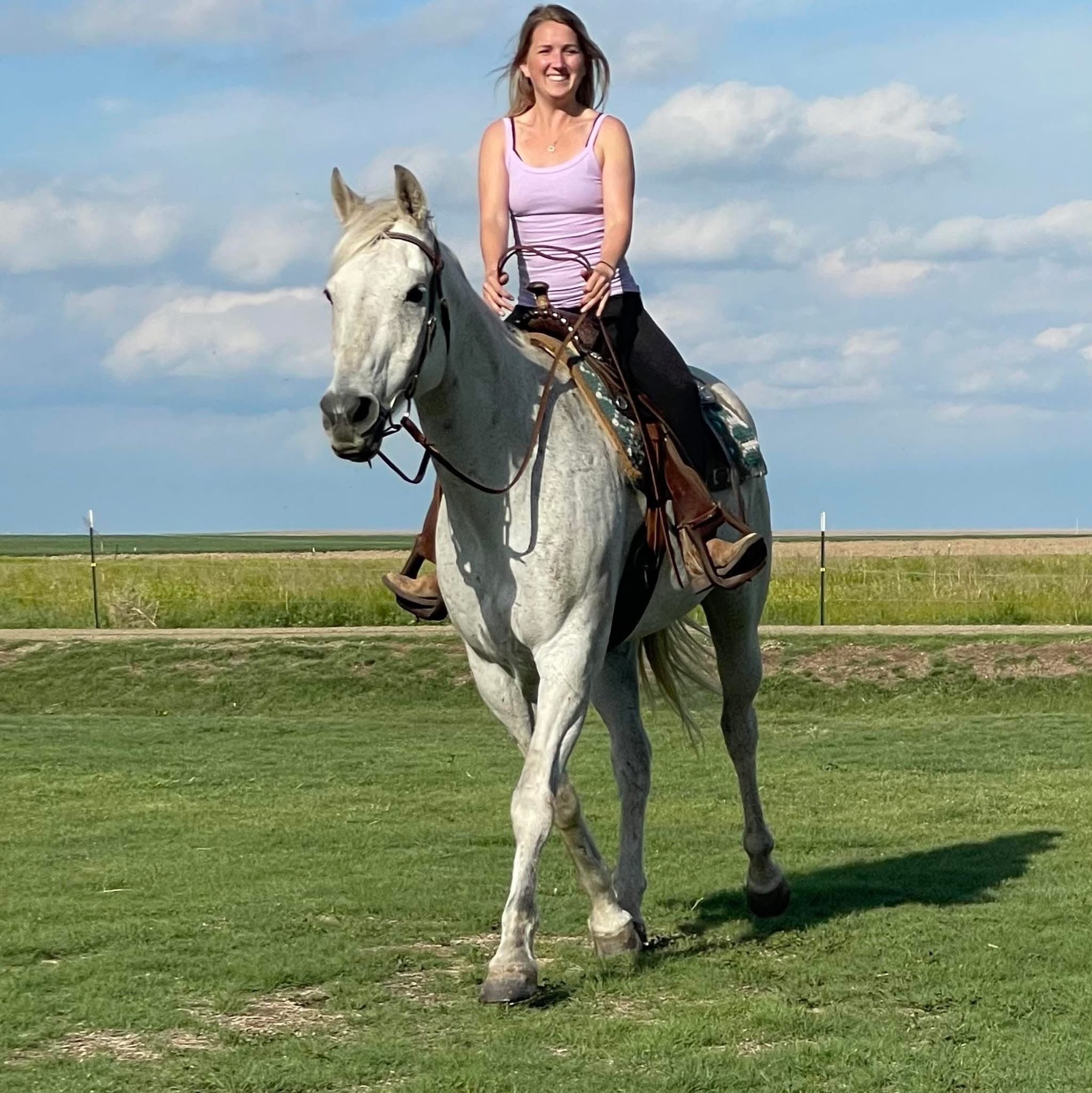
Morgan didn’t end up having to share her medication because in the nick of time, Allison’s insurance approved Trikafta. She started taking it and she waited for the much-vaunted improvements. She remembers, during that week, just feeling tired — she coughed to exhaustion, a “different kind of cough” than she’d ever had before, and her already-low energy levels took another dive. She was parenting through it, but it was tough. And then, about a week later, she realized she wasn’t coughing anymore. Her nose wasn’t plugged up. She could really smell; she could take a deep breath. Simply put, she says, “it just changed everything.”
Although she says that now “every single January is a little bit stressful” because of open enrollment, when everyone’s insurance plans come up for renewal, Allison lives a completely different life to before. The days of struggling to run a mile are over; she now runs marathons. She had a second daughter. She started working full-time, and then she went back to college to complete her degree and continue onto a Master’s. She gained the confidence to divorce her husband, “and that’s something I never would have been able to do before — I mean, things were never really great [between us] but before it was like, there’s no way I can live by myself and have a career that supports me and them and all that.”
Allison is “grateful every day” for the “miracle” she was given. “The only thing that I struggle with now a little bit, and I don't know that it's even really a big deal, but I moved to a different town around the same time Trikafta came out,” she says. “And anytime I talk about my old life or who I used to be or whatever, I feel like it's super hard for people to understand that you were ever sick.” Going from your deathbed to normalcy within a week stays with you. But Allison can’t really discuss it with people who didn’t see her during her pre-Trikafta years: “It's something even now in new friendships or new relationships, I just kind of avoid the topic because I feel like it sounds dramatic or it sounds kind of unbelievable, you know? And I'd think it, too, if I saw somebody that's perfectly normal that said they were so sick before... I don't really talk about that chapter with those that don't know about it.”
Allison would like to move on and concentrate on the extra time she’s been given now that that chapter is behind her. The world weighs heavier on Morgan. And whatever outlook either has, it’s undeniable that the sisters’ old dynamic was completely smashed apart by the health that Trikafta gave them. But what was left in its place was something so much more valuable.
Allison smiles. “Now we’re just two sisters who can have normal lives and bond in different ways.” What’s strange is that sometimes she does bring up conversations about CF with Morgan now, after avoiding them her whole life. It turns out that all they needed was some breathing space.
The problem with a long life
A recent study projected that life expectancy for people with CF taking Trikafta is 72 years old, around double what was expected before the drug came out. For those who are able to start taking the medication as children, the same study found that it is likely they will have the same life expectancy as people without cystic fibrosis.
We are already seeing the effects of this longer expectancy on society. People with CF are living long enough to take senior managerial positions: the CF Foundation has a person with the condition as their chair of the Board of Trustees for the first time in history. KC White, the chair, has a son who she once hoped to see start kindergarten. This year, he graduates high school.

In general, people on Trikafta are now having healthy pregnancies and multiple children — Allison has her two daughters, and Morgan has twins, a boy and a girl. Allison remembers her mother crying and saying, “I never thought I’d be a grandma.” To have one grandchild would have been a dream come true; to have four is beyond what she ever could have imagined. Her son, Mason, also benefited from Trikafta, meaning that all three of her children now have radically different outcomes to what she was told that day of the plastic bag sweat test at the Kansas Children’s Hospital.
But that longer life span comes with some challenges, even beyond the psychological. We are now seeing the first cohort of people with CF to live an extended lifespan, and problems are already cropping up. A new strain of diabetes — unlike type one or type two, a kind that behaves completely differently — has started to develop in CF patients as they age. Questions about liver and heart disease are being asked which are changing the standard protocols: for instance, a parent of a child with CF is usually told to keep them on a very high-calorie diet. That’s not a problem if you’re living until you’re 30 years old. But if you’re living until you’re 70 or 80, it has cumulative effects on your digestive system, your circulatory system, your organs. What does an elderly person with CF actually look like? As yet, the world doesn’t know.
Trikafta was first approved only for adults with CF, but was recently given extended approval for anyone with the condition over the age of 2. A black market for the drug has popped up for pregnant people and people with infants who are unwilling to wait. And for many across the world, the wait will continue for any access at all. Vertex Pharmaceuticals has not made Trikafta available in poorer countries, due to its pricing and patenting. Thousands of people who could benefit are unable to do so.
The U.S.-made drug has even found itself at the center of a political firestorm in eastern Europe. In 2022, Russian outlets reported that the country was experiencing a severe shortage of the drug due to sanctions surrounding the war with Ukraine. Earlier this year, the independent Russian news outlet Meduza, which was outlawed by Putin, reported that children across the country had had their Trikafta prescriptions abruptly stopped and had been put onto a controversial Argentinian drug that had never been tested on humans instead. The consequences were brutal and immediate, underscoring how quickly the gift of normal-seeming health can still be taken away from anyone with the condition.
When you’re ‘living in the right timeline’ — and when you aren’t
What now, for the people who have not benefited from the miracle drug? Faith Miller — the woman from Virginia whose full-body reaction meant that she couldn’t continue her course of treatment — has started “having the lung transplant conversation” with her doctors.
John Ashinhurst is an adoptee from Peru who was diagnosed in the U.S. when his parents realized there was something wrong with his health as a baby. He has a very rare CF mutation that means he doesn’t qualify for Trikafta, so he never took it in the first place.
John — who now works in medicine, and credits his childhood doctor for encouraging him to go down that route because she took the time to explain every scan and test to him while he was growing up — remains positive. He remembers when the very first modulator — a drug that works similarly to Trikafta, and was one of its predecessors — became available in 2012. “At that time, I was a graduate student,” he says. “I remember when that press release came out — it was seven in the morning. I was a TA at a class at seven thirty. I had just gotten the update from the CF Foundation about it, and in that span of 30 minutes, I had called my doctor, I had said: We need to pull down my genetic testing to see if I would qualify, and I had called my significant other, too. I was just like: This is breakthrough medicine. And then I literally went to the bathroom to cry, because I knew this was a life-changing thing.”
When the genetic results showed that that breakthrough wouldn’t work for John, he says, “it broke a part of my heart. Because I was at that age where I was just starting to feel the real effects that adulthood and CF have on the body. And it hurt.” Nevertheless, he felt happy for the people it would help. John’s rare mutation also means that he had a relatively disease-free childhood, with only two hospital stays in his first 18 years — which is basically unheard of among kids who have CF. His relatively good health also meant that he was part of a number of successful medical trials, including one for the vibrating vest that replaced manual pummeling on the chest and one for a game-changing antibiotic that laser-targets bacteria that can grow in the lungs. He knows other people with worse mutations who suffered when they were younger will now get to live the kind of life he had as a child, and that knowledge comforts him.
.jpeg)
When John was younger, he used to believe that he would become a famous medical researcher who would cure himself. Now, he realizes that isn’t quite so realistic. And he knows that when a treatment does come that will help him, it will be different to how he imagines: the years have taken their toll and done irreparable damage to his body. He’s had numerous operations on his sinuses in the past few years. Like Faith, he knows a lung transplant decision could be on the horizon: “I feel like I have some very hard decisions to make in the next five years.”
Yet John believes we’re about to enter a “golden age” of CF research. If he can keep his health stable, he thinks they might find another miracle drug, or even a cure. The CF Foundation is currently doing some work with Moderna — the pharmaceutical company behind the groundbreaking mRNA Covid vaccine — that directly targets the genetic fault causing the condition. If that was doable, everything could change for everyone, “as long as nothing is disturbed too much with politics or anything,” he adds. Sweeping cuts to the National Institutes of Health — the primary source of medical research funding in the U.S. — by the Trump administration continue to play out in the background.
In 2024, Vertex released a new CF drug similar to Trikafta that appears to have even better results and that targets an extra 31 mutations. It was approved for use in the U.S. at the end of December, and got U.K. approval in March 2025. The added mutations mean that now around 95 percent of people with CF should be able to benefit from the medication. Faith Miller has been told that her mutation qualifies. John’s does not.
The first five-year study into long-term use of Trikafta was just released, too, and it shows no decline in lung function. Fears that the person’s body might stop using the drug as well over time have proven to be unfounded. That’s good news for Morgan, Allison and their brother Mason, and the many thousands of others who have suddenly been given the gift of time.
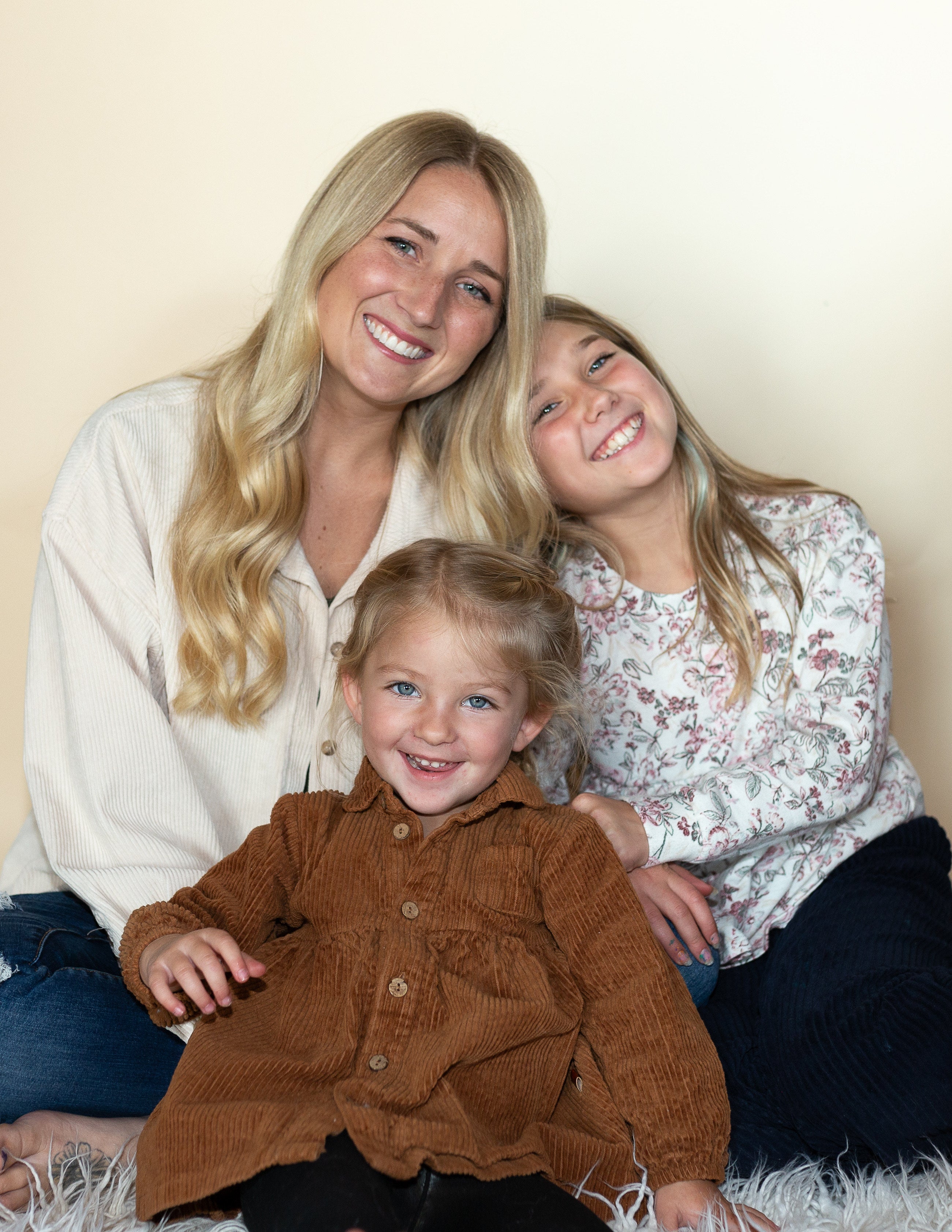
KC White, the chair of the CF Foundation board, knows a lot of people whose lives have been changed by Trikafta, and a lot who have struggled with what that means. “I have a friend who told me: I’ve been preparing my whole life for my health to decline, but I never prepared for it to get better. And that speaks to me in some ways,” she says. She won’t sleep easy until there’s a drug that also benefits that 5 percent of people who don’t qualify for Trikafta or Alyftrek. Until then, she says, “we carry each other’s stories.”
“It’s a hard thing to grapple with and to understand and to come to terms with, I guess, because it's not like I did anything better or different than any of those people,” says Morgan. “It's just a luck thing — right time and place and living in the right country, living in the right timeline, as far as this becoming available when it did. It's just like a lot things aligned, a lot of luck, to make it so it worked for me.”
As a child, she says, she never thought “why me?” She was too focused on getting well, on staying well, on looking after everybody else. Now she’s healthy, she thinks “why me?” all the time — but it’s about why she got this phenomenal chance to live her life, when so many others didn’t.
Join our commenting forum
Join thought-provoking conversations, follow other Independent readers and see their replies
Comments